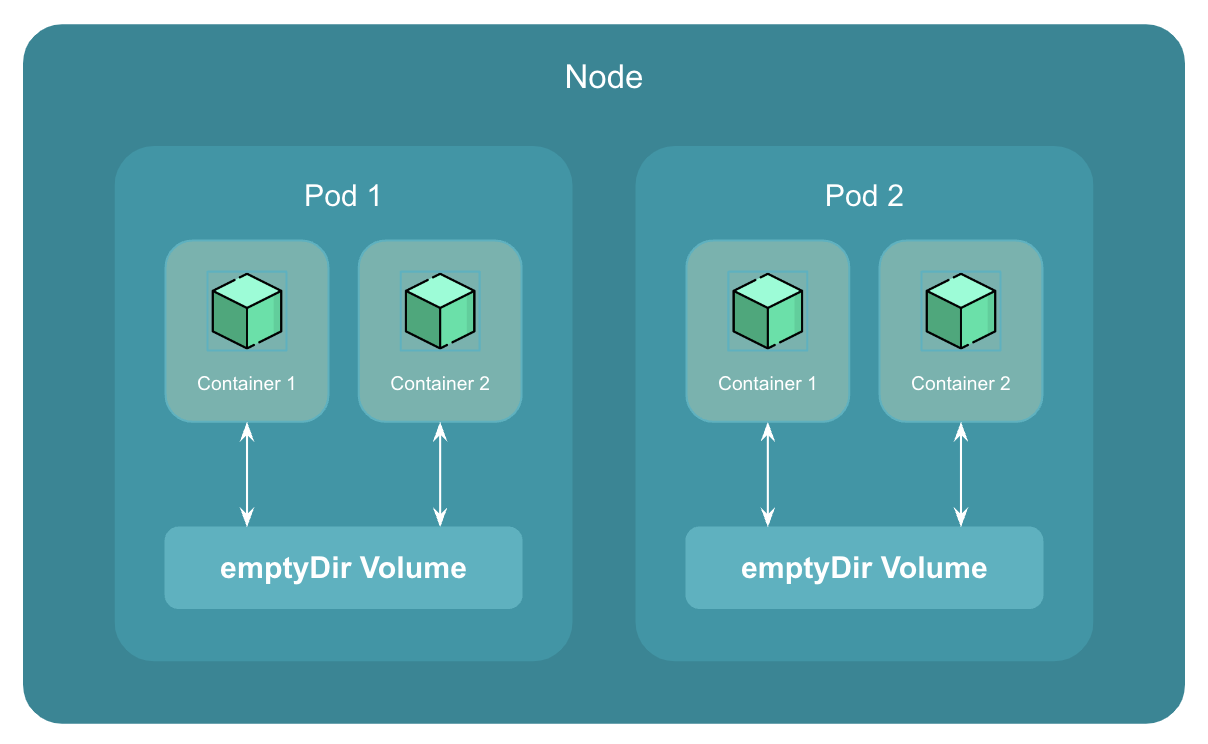Introduction to emptyDir Volume¶
An emptyDir volume is first created when a pod is assigned to a node, and exists as long as that pod is running on that node.
As the name says, the emptyDir volume is initially empty.
All containers in the pod can read and write the same files in the emptyDir volume, though that volume can be mounted at the same or different paths in each container.
When a pod is removed from a node for any reason, the data in the emptyDir is deleted permanently.
emptyDir volume falls into the ephemeral storage category.
Use Cases of emptyDir Volume¶
Here are a few use cases of emptyDir volume:
-
Temporary storage
emptyDirvolumes can be used as temporary storage for containers that need to store data temporarily. For example, if you have a container that generates a report, you can store the report in anemptyDirvolume until it is ready to be sent to a database or displayed to users. -
Sharing data between containers in the same pod
emptyDirvolumes can be used to share data between containers running in the same pod. For example, if you have a pod running two containers, one of which generates data and the other processes it, you can use anemptyDirvolume to share the data between the two containers. -
Caching data
emptyDirvolumes can be used to cache data that is frequently accessed by containers. For example, if you have a container that frequently accesses a large dataset, you can store a copy of the dataset in anemptyDirvolume to speed up access times.
References:
